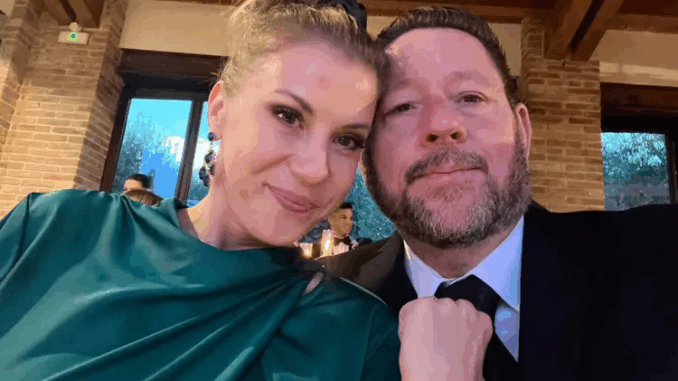
For millions who grew up in the 1990s, Jodie Sweetin was the wisecracking middle child of Full House, known for her iconic catchphrase, “How rude!” Offscreen, though, her life became anything but lighthearted.
By her twenties, she had fallen deep into addiction — a battle that would nearly destroy her career, her family, and her sense of self. Yet, through courage and candor, Sweetin turned her pain into purpose, becoming one of Hollywood’s most authentic voices for recovery and mental health.
The Fall After Fame
When Full House ended in 1995, Sweetin was just 13. She had spent nearly half her life in the public eye — adored, but unprepared for what came after.
“The applause stopped, and I didn’t know who I was without it,” she wrote in her 2009 memoir, unSweetined.
She began drinking at 14, experimenting with ecstasy, cocaine, and eventually methamphetamine. Fame had given her validation; addiction filled the void when it disappeared.
“I chased that feeling of being loved — until it almost killed me,” she later said.
The Descent into Addiction
By her mid-20s, Sweetin’s life was a blur of substance abuse, failed relationships, and lost opportunities. She was fired from multiple projects and isolated from former co-stars.
“Addiction makes you believe you’re invincible, even as you’re dying inside,” she reflected in a 2021 interview.
Her rock bottom came after losing custody of her daughter, Zoie, in 2008. That moment, she said, “was when the illusion shattered — and I had to start over.”
Recovery: A Hard-Won Journey
Sweetin entered rehab and began the long process of recovery — relapsing multiple times before finding stable sobriety. She credits therapy, community, and self-forgiveness as the keys to rebuilding.
“Sobriety didn’t make life easier; it made it real,” she told Today. “I learned to sit with pain instead of numbing it.”
Unlike many celebrity recovery stories, Sweetin refused to romanticize her past. She described addiction as “a disease that steals your truth” — not a scandal, but an illness demanding compassion and accountability.
Rebuilding Career and Purpose
In 2016, Netflix’s Fuller House gave her career a second act, but this time she approached fame differently. She became an outspoken advocate for recovery awareness, mental health, and women’s empowerment.
“When I was younger, I thought acting was my identity,” she said. “Now it’s my platform — for something bigger than me.”
She became a certified drug and alcohol counselor, working directly with recovery programs to help others escape the same cycle. Her authenticity resonated deeply, especially with young women navigating trauma and self-worth.
Activism Beyond Hollywood
Sweetin’s activism now extends beyond addiction. She has been active in social justice movements, speaking out on women’s rights and mental health. She told The Independent:
“Recovery gave me my voice. I’ll use it to stand up for people who don’t feel heard — whether that’s about sobriety or equality.”
Her transparency challenges the stigma that still surrounds relapse and recovery.
“People think sobriety is a straight line,” she said. “It’s not. It’s a circle of grace — you fall, you rise, you learn.”
Cultural Resonance
Experts often cite Sweetin’s story as emblematic of the dark side of child stardom.
Psychologist Dr. Nancy Irwin explains:
“Child actors are often rewarded for performance, not authenticity. When that ends, they have to rediscover who they are — and that process can be devastating without support.”
In that context, Sweetin’s recovery becomes not just personal but symbolic: proof that fame’s aftermath doesn’t have to end in tragedy.
Resilience and Reflection
In recent interviews, Sweetin radiates grounded wisdom.
“I used to chase validation; now I chase peace,” she said in 2023.
She continues acting, counseling, and mentoring, showing that redemption is not about perfection — it’s about persistence.
Her story resonates because it redefines what success looks like after failure: not returning to who you were, but becoming someone better.
FAQs
Q1: What drugs did Jodie Sweetin struggle with?
Primarily alcohol, methamphetamine, and cocaine.
Q2: How many times did she relapse?
She has openly discussed multiple relapses before achieving lasting sobriety.
Q3: How long has she been sober?
Over a decade as of 2023.
Q4: What does she do now?
Acts, speaks publicly about recovery, and works as a certified substance abuse counselor.
Q5: What is her message to others struggling?
“You are not broken — you are healing. Don’t let shame steal your second chance.”
